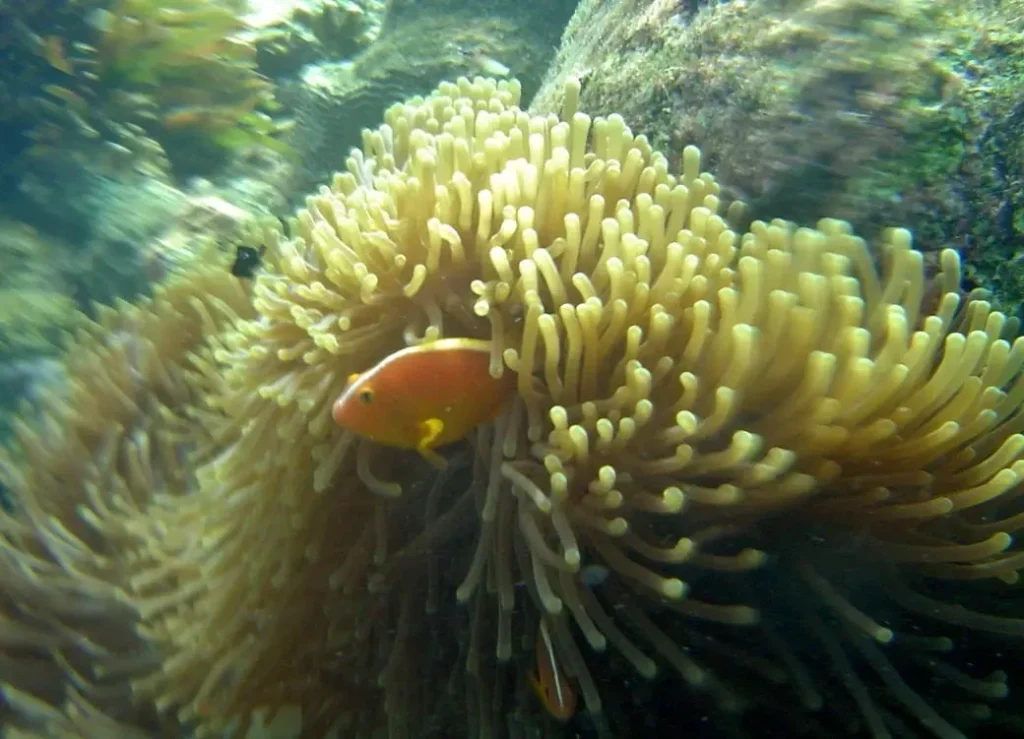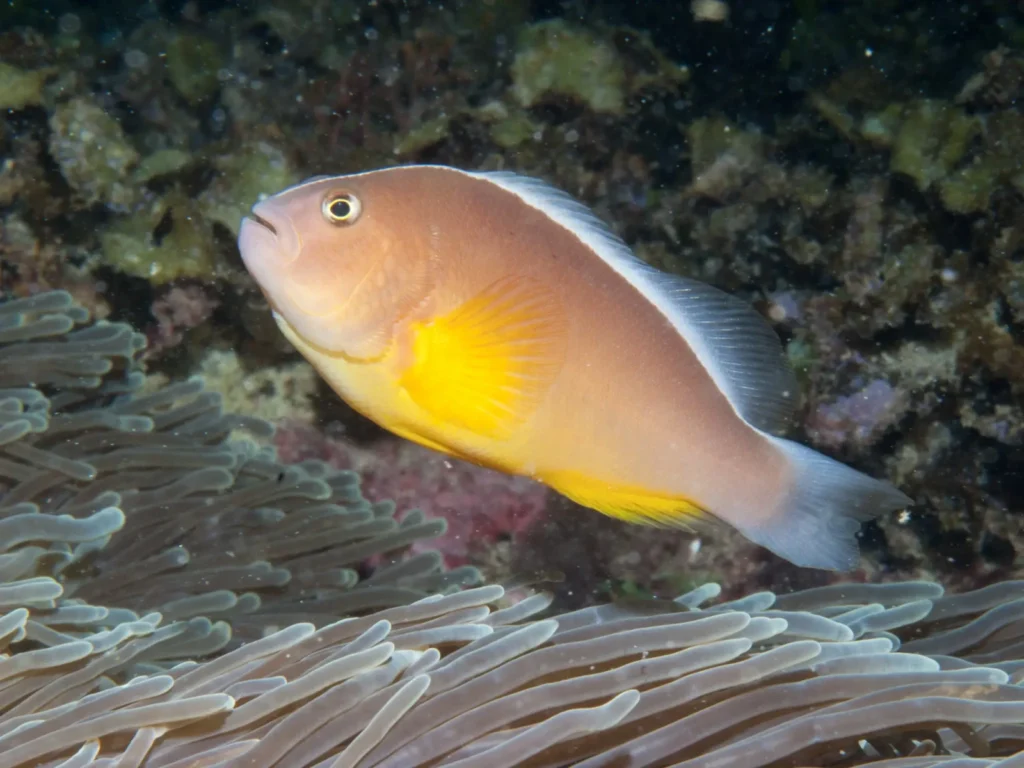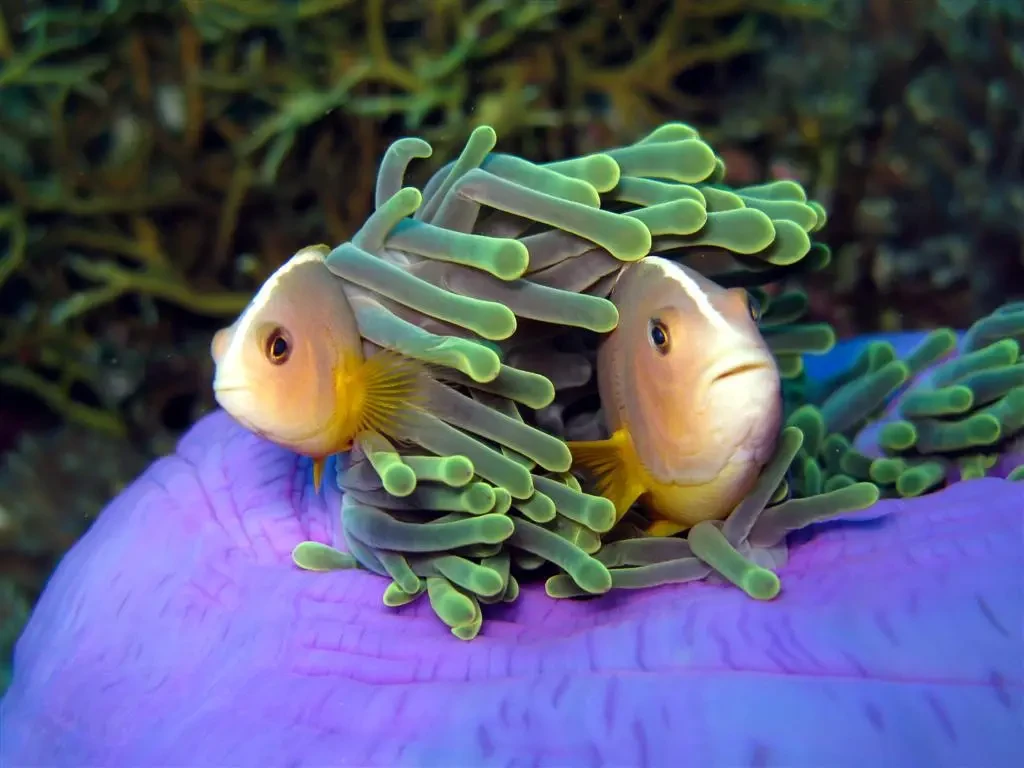Among the clownfish, there are species that differ not only in their character, but also in their appearance. elegant, soft colors. Amphiprion akallopisos, or two-lane clown, has delicate peach color and white stripe running from muzzle to tail. It looks less contrasting than the classic bright orange clowns, but its exquisite beauty and behavior make it a unique member of the genus. Amphiprion.
✔ Elegant and delicate color scheme-pink-orange with a white dorsal line
✔ Less aggressive than other clowns
✔ It lives in symbiosis with certain anemone species
✔ It is distributed in the waters of the Indian Ocean and the western Pacific Ocean
Let's take a closer look at this unusual and beautiful inhabitant of coral reefs!

Scientific classification
✔ The Kingdom: Animals (Animalia)
✔ Type: Chordal (Chordata)
✔ Class: Lucheperi pisces (Actinopterygii)
✔ Row: Perch-like (Perciformes)
✔ Family: Pomacentrovye (Pomacentridae)
✔ Gender: Amphiprion
✔ View: Amphiprion akallopisos (Bleeker, 1853)
📌 Interesting!
Title akallopisos it comes from the Greek language and means "gentle view”, which accurately describes the soft coloration of this fish.
Appearance
🔹 Body shape:
✔ Oval, flattened on the sides
✔ Compact, well adapted to life among anemones
🔹 Color scheme:
✔ Main color – from light orange to pink
✔ One thin white striperunning along the entire back, from head to tail
✔ Eyes are large, dark, harmoniously combined with the general color
🔹 Sizes:
✔ Average length: 6-8 cm
✔ Maximum length: up to 11 cm
📌 Interesting!
Unlike other clownfish, the A. akallopisos the body doesn't have the classic white cross stripes, which makes it particularly recognizable.
Range and habitat
🌍 Where does the narrow-band amphiprion live?
Indian Ocean - from the east coast of Africa to Indonesia
✅ Western Pacific-around the Malay Archipelago
🔹 Living environment:
✔ Prefers coral reefs and lagoons with lots of anemones
✔ Inhabits at depths of 3-25 meters
✔ Often found among sandy areas near reefs
📌 Interesting!
This species of clown rarely leaves the anemone and mostly moves within its limits.
Symbiosis with sea anemones
🔹 How does symbiosis work?
✔ Protects the anemone from predators
✔ Uses her tentacles as a shelter
✔ Brings her food and cleanses her of any leftovers
🔹 What kind of anemones does it co-exist with?
✔ Heteractis magnifica (majestic anemone)
✔ Stichodactyla mertensii (Mertens ' anemone)
📌 Interesting!
If a narrow-band clown is moved to a new anemone, it will take time to adapt to develop protection from its stinging cells.

Lifestyle and behavior
🔹 Social structure:
✔ Lives in small groups (dominant female, male and juveniles)
✔ The largest individual in the group – female, the rest are males
🔹 Defensive behavior:
✔ Less aggressive than Amphiprion ocellaris or A. clarkii
✔ When threatened, it hides in the tentacles of an anemone
🔹 Life span:
✔ In the wild: 6-10 years old
✔ In captivity: up to 12 years old
📌 Interesting!
If the dominant female dies, the largest male changes sex and takes its place.
Nutrition and environmental role
🥗 What does amphiprion narrowband eat?
✅ Small zooplankton
✅ Crustaceans
, Seaweed
🔹 Environmental role:
✔ Cleanses the anemone from food residues
✔ Controls the abundance of small marine organisms
📌 Interesting!
Clownfish can even bring small food to anemones, helping them survive.
Reproduction and development
🔹 Method of reproduction:
✔ Female lays eggs 200-500 eggs
✔ The male guards the clutch, cleans the eggs
🔹 Development:
✔ Larvae swim in the water column up to 2 weeks
✔ Juveniles settle among anemones after metamorphosis
📌 Interesting!
Clownfish larvae are very sensitive to light, and their coloration only appears after settling on the reef.

Species conservation and environmental threats
🔹 Population status:
, The species is not under threat
🔹 Main threats:
Ruinuvannya coral reef destruction
Zabrudnennya ocean pollution
🔹 Security measures:
✔ Marine reserves
✔ Controlled catch
📌 Interesting!
Climate change and the death of anemones can affect the number of this species.
Conclusion
🐠 Amphiprion akallopisos is a gentle and elegant reef dweller that fascinates with its refinement and harmonious color.
💡 Would you like to see this unique clown in the wild? 🌊✨